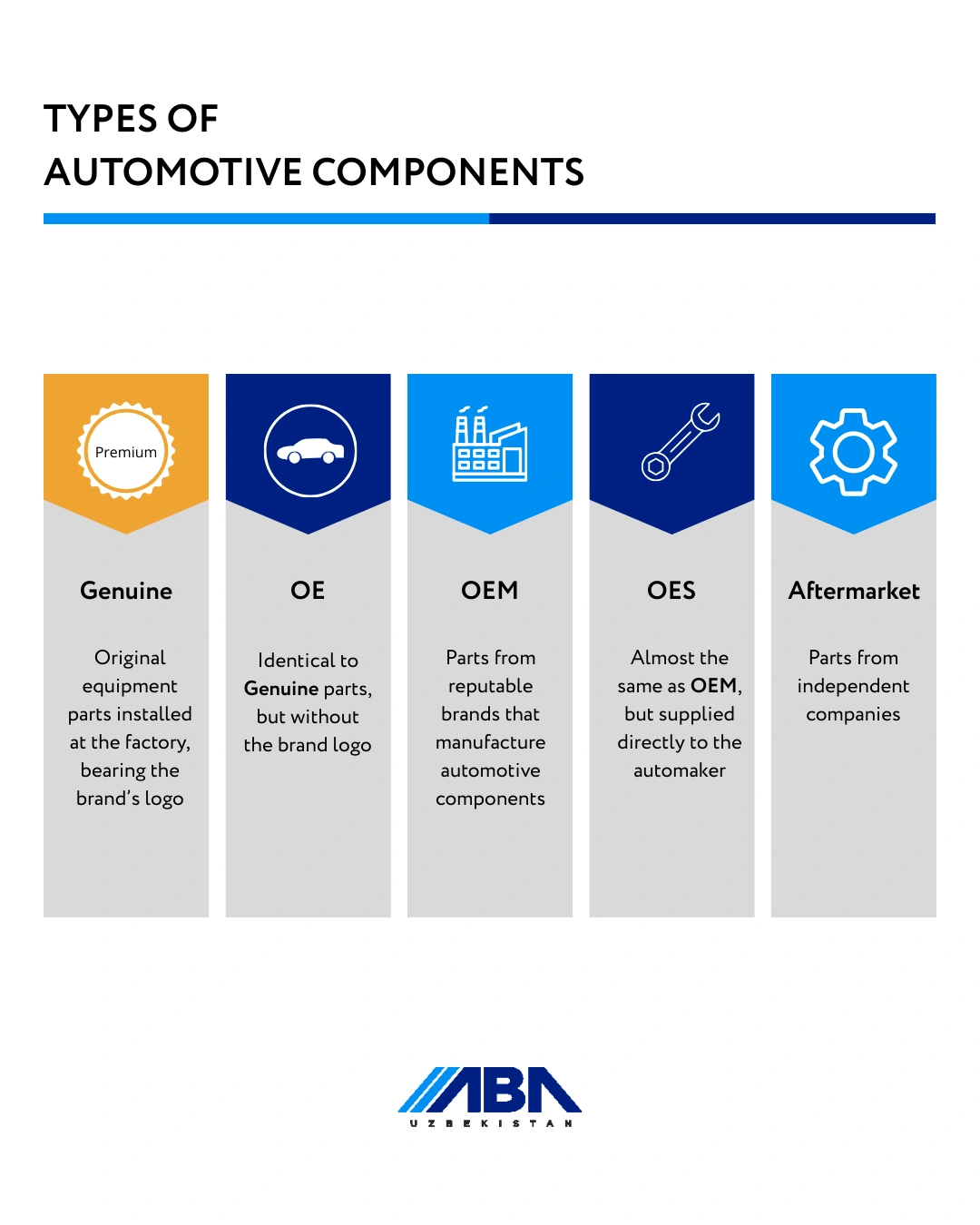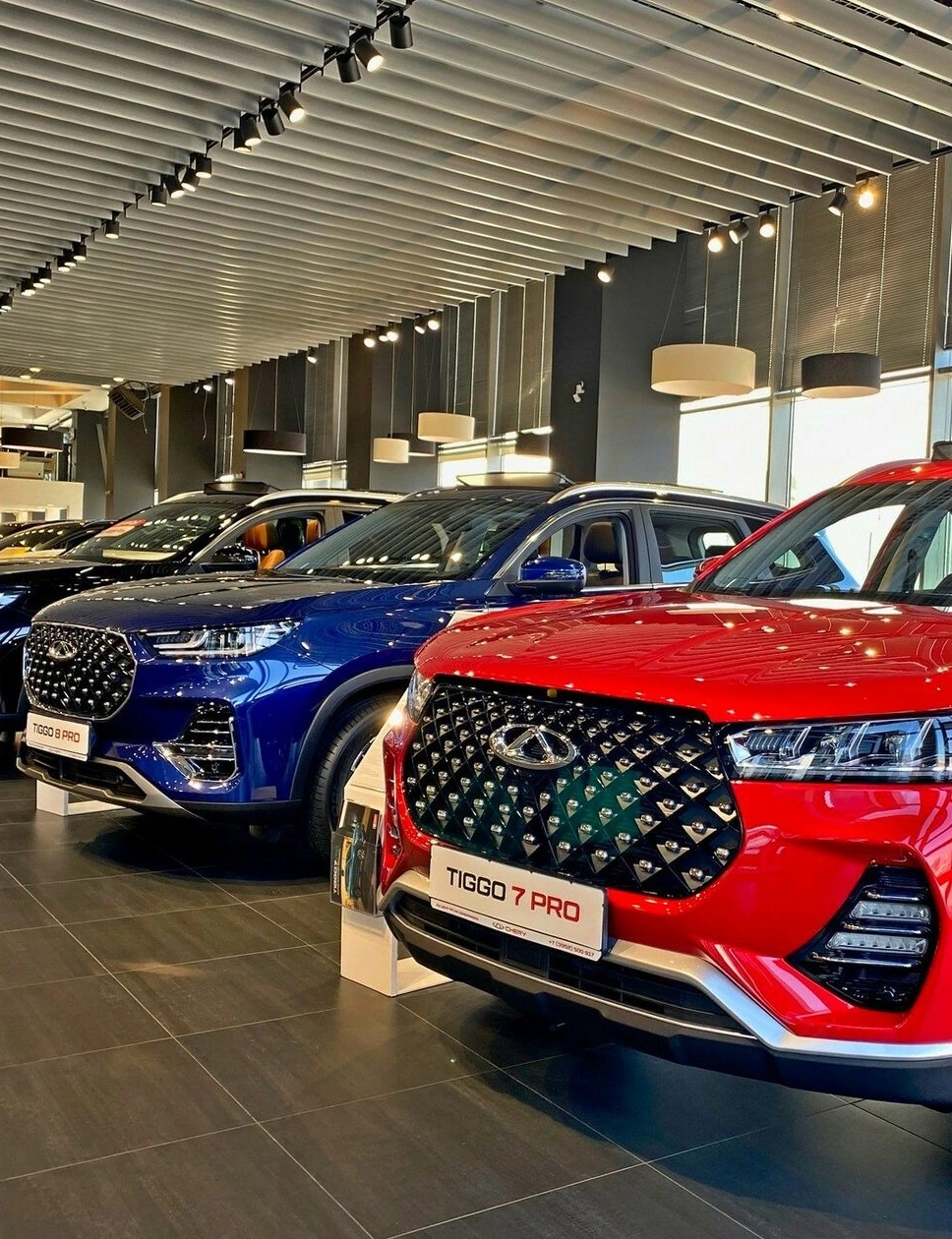How to Choose Auto Parts: What’s the Difference Between Genuine, OE, OEM, OES, and Aftermarket?
22.08.2025

When it's time to replace a car part, drivers face a simple but important question: which part should I choose? There are many options, but the five most common types are Genuine, OE, OEM, OES, and Aftermarket. Let's break them down in plain language.
Genuine - the original part with the carmaker's logo. This is the “native” component that was installed in the car at the factory. It is produced by an external supplier but sold under the automaker's brand (e.g., Audi, BMW, or Toyota).
Example: Textar brake pads supplied to Audi's factory are labeled as Genuine Audi and cost more.
OE (Original Equipment) - the same part, but without the brand label. OE parts are identical to Genuine parts, made by the same factory, but sold under the supplier's brand instead of the automaker's.
Example: The same Textar brake pads without the Audi logo - cheaper, but essentially no different.
OEM (Original Equipment Manufacturer) - respected brands that supply auto components, though not always specifically for your model.
Example: NGK spark plugs that fit BMW, even though BMW itself uses Bosch. NGK is an OEM option - less expensive but high quality.
OES (Original Equipment Supplier) - almost the same as OEM, but in this case the part comes directly from the supplier that worked with the automaker.
Example: A Sachs shock absorber - the same as installed at the factory, but purchased directly from the supplier, without extra markup.
Aftermarket - parts from independent manufacturers. Some are excellent, others questionable. The key is choosing a trusted brand and ensuring compliance with technical requirements.
Example: A bearing from SKF is a good choice, while an unbranded no-name part is a risk for both your wallet and your safety.
Why Low-Quality Car Parts Are Dangerous
1. Safety Risks
- Brake pads may fail to work on time → risk of an accident.
- Steering rods or suspension can break while driving.
- Airbags may not deploy at all or may deploy incorrectly.
2. Accelerated Vehicle Wear
Cheap parts can fail quickly and damage other components.
Example: a poor-quality oil filter → engine damage. This increases the load on related parts.
3. Higher Costs
Frequent breakdowns → repeated replacements.
A cheap part today = an expensive repair tomorrow.
"Save on a small part - lose on a major repair."
4. Warranty Issues
Car services may refuse warranty repairs if “unauthorized” parts were used.
Official dealers work only with Genuine or certified OEM parts.
5. Counterfeit Risks
Fakes may look like originals but lack the required specifications.
No quality control, no warranty. Sometimes they're just refurbished old parts.
How to Spot a Fake?
- Price too low? Suspicious.
- Cheap packaging or spelling mistakes? Be careful.
- No serial number or hologram? Warning sign.
- Instruction sheet with typos? Another red flag.
- Compare with the original part: different fittings, color, or weight? Likely a counterfeit.
Conclusion:
- Genuine - 100% compliance, but expensive.
- OE/OEM/OES - high-quality and more affordable alternatives.
- Aftermarket - budget option, but requires careful selection.
